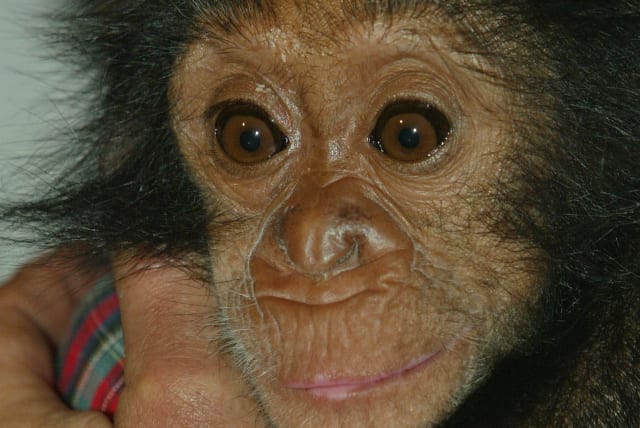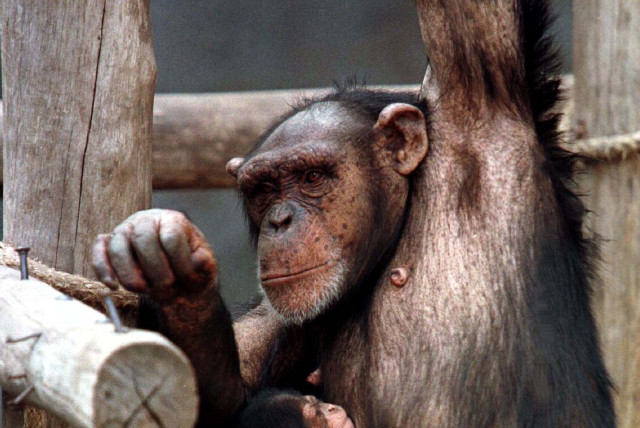Do baby chimps acquire language like human children do? - study

Researchers observed a group of 28 semi-wild chimps, aged between 1-11 years old in northern Zambia.
When chimpanzees are learning to speak, they use the same combination of body language, facial expressions and speech as a human baby, a study published on Monday found.
The peer-reviewed article, published in the journal Animal Behaviour, details the psychological evaluation of young chimps
When evaluating the chimps, the psychologists realized that communication signals had been developed which enabled communication in different social situations. The language, both physical and verbal, that chimps used altered depending on whether they were playing or not.
The chimps were socialized into understanding these communication cues during their infancy. They learned to open their mouths playfully as if laughing, the sounds to make when touching another chimp, and when to bare their teeth.
How did the researchers study chimp communication?
The researchers observed a group of 28 semi-wild chimps, aged between 1-11 years old in northern Zambia.
While the researchers observed all the chimps communicating verbally and non-verbally, they found that older chimps were able to communicate with a more advanced combination of signals. Younger chimps used a single combination signal more frequently than their older counterparts.
Why is this information useful in understanding human development?
Scientists believe that this communication, with “multimodal” development, could help close the gap in understanding how early humans once communicated.
"When we think about human language, we know that it is a combination of different types of communication such as speech, facial expressions and gestures,” said Emma Doherty, a co-author in the study. "The way we communicate likely has deep evolutionary roots that are shared with some of our closest living relatives such as apes."
"Our study provides evidence that the way chimpanzees communicate with increased complexity as they get older is consistent with the development of communication we see in human infants."
"By studying the development of this multi-layered way of communicating among young chimpanzees we can learn more about the reasons behind this and shed light on the potential evolutionary continuity between humans and other apes."
Dr. Zanna Clay, an author of the study, stated that “a lot of the focus of research so far into communication, both in humans and other animals, looks at individual communication signals independently, but we know humans combine these signals all the time from early infancy."
"As a close relative of humans, apes give us a snapshot into how these signals could have evolved into multimodal communications, ultimately culminating in human language."
Jerusalem Post Store
`; document.getElementById("linkPremium").innerHTML = cont; var divWithLink = document.getElementById("premium-link"); if (divWithLink !== null && divWithLink !== 'undefined') { divWithLink.style.border = "solid 1px #cb0f3e"; divWithLink.style.textAlign = "center"; divWithLink.style.marginBottom = "15px"; divWithLink.style.marginTop = "15px"; divWithLink.style.width = "100%"; divWithLink.style.backgroundColor = "#122952"; divWithLink.style.color = "#ffffff"; divWithLink.style.lineHeight = "1.5"; } } (function (v, i) { });

